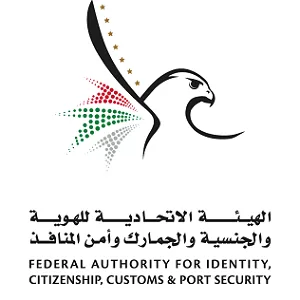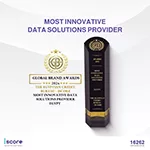Resources
Crisis Management in Practice: Jack Byrd’s Deployment Strategy During Emergency Response Operations

Solaren Risk Management’s emergency deployment protocols reveal systematic approaches to rapid personnel mobilization and resource allocation during natural disasters and crisis situations.
Emergency response operations test security companies’ operational capabilities under extreme conditions. Solaren Risk Management’s deployment during Hurricane Milton in October 2024 provides insight into how private security firms mobilize resources across state lines while maintaining existing client commitments (https://www.solarenrm.com).
CEO Jack K. Byrd III developed emergency response frameworks that combine advance planning with flexible deployment strategies addressing both immediate crisis needs and operational continuity. Hurricane Milton operations demonstrated these capabilities through coordinated deployment involving specialized personnel and equipment (https://www.solarenrm.com/news).
Emergency Deployment Framework
Hurricane Milton presented Solaren with complex logistical challenges requiring rapid resource mobilization while maintaining existing client services. “We ended up taking a command center down there and we had multiple vehicles so we could patrol the properties. We had to gather as many people as we could to go down there,” explains Bethany Gill, Director of Operations.
Personnel availability becomes critical during emergency deployments. “The thing is, we have locations here that we can’t just pull people from because those locations still need security,” Gill notes. This constraint requires supplemental recruitment strategies that don’t compromise existing client commitments.
Emergency recruitment utilizes multiple outreach channels. “We would do outreach. We would basically say, if you have all the qualifying documents, we will onboard you and you can come with us down to this project for a certain price and all that kind of stuff per diems and all that,” Gill describes.
Recruitment and Qualification Processes
Emergency personnel recruitment compresses normal hiring timelines while maintaining quality standards. Social media platforms and email distribution systems reach qualified contractors who possess necessary certifications and availability for immediate deployment.
Document verification becomes essential during accelerated recruitment processes. “Getting people who are qualified, reviewing their documents, making sure that they were actually legit, and if they were, tell ’em to meet us here at our headquarters,” Gill explains regarding qualification procedures.
Convoy coordination addresses transportation logistics during emergency deployments. “We would all do a caravan basically down there because we had so much equipment that we had to take down, so we needed the help for that,” Gill describes. Equipment transportation requires coordinated movement of personnel, vehicles, and specialized security equipment across state lines.
Operational Execution and Results
Hurricane Milton deployment achieved client satisfaction through systematic execution of emergency response protocols. “The deployment was actually pretty smooth, and the client was very happy with our services down there,” Gill reports regarding operational outcomes.
Personnel morale remained positive despite challenging conditions. “I’ve heard some funny stories from them coming back. So everybody down there seemed to have a good time, honestly, really despite the hurricane,” Gill observes. Maintaining personnel morale during extended emergency deployments affects operational effectiveness and future deployment availability.
Supplemental Security Services During Crises
Emergency deployments often involve supplemental security rather than primary protection services. Existing client security teams receive additional support during crisis situations when normal security measures prove insufficient for elevated threat environments.
“Basically they have their own security team that they have on their location that’s always there. But because of looters and stuff like that, people that kind of do what they want during these times,” Gill explains regarding client needs during Hurricane Milton.
Armed security becomes particularly valuable during natural disasters. “They needed some added specifically armed security down there to help ’em out,” Gill notes. Emergency conditions create security vulnerabilities requiring enhanced protection capabilities beyond normal operational requirements.
Strategic Client Development Through Emergency Response
Emergency deployments can serve broader strategic objectives beyond immediate crisis response. Hurricane Milton operations provided opportunities to demonstrate capabilities to potential long-term clients.
“We were able to provide that supplementary security down there, and so we wanted that added support for them,” Gill explains. Emergency response demonstrates operational capabilities while building relationships that may lead to permanent service contracts.
Property protection during evacuations creates unique operational requirements. Emergency security personnel must secure facilities when normal occupants evacuate, requiring different protocols than occupied facility protection.
Technology and Equipment Deployment
Emergency operations require portable technology solutions that function independently of local infrastructure potentially compromised by natural disasters. Command centers provide coordination capabilities while mobile patrol units enable property monitoring across multiple locations.
Equipment redundancy becomes essential during emergency deployments. Communication systems, vehicles, and security equipment must continue functioning despite harsh environmental conditions and limited maintenance capabilities during crisis situations.
Risk Management and Safety Protocols
Emergency deployments involve elevated risk profiles requiring enhanced safety protocols beyond normal security operations. Natural disaster environments present hazards including damaged infrastructure, contaminated conditions, and potential civil unrest.
Personnel safety briefings address environment-specific risks while establishing communication protocols for emergency situations. Geographic unfamiliarity compounds normal operational risks, requiring additional safety measures and coordination procedures.
Financial Considerations and Pricing
Emergency services command premium rates reflecting increased risks, accelerated deployment timelines, and specialized operational requirements. Pricing structures must account for transportation costs, per diem expenses, and hazard pay during crisis deployments.
Resource allocation affects overall company profitability as emergency deployments require significant upfront investments before revenue recognition. Cash flow management becomes critical during large-scale emergency operations requiring immediate resource commitments.
Coordination with Local Authorities
Emergency deployments require coordination with local law enforcement and emergency management agencies managing overall disaster response. Private security operations must complement rather than compete with public safety efforts.
Jurisdictional awareness becomes essential when operating across state lines during emergency situations. Different regulatory frameworks and operational protocols require advance research and relationship development with local authorities.
Lessons Learned and Process Improvement
Post-deployment analysis identifies operational successes and improvement opportunities for future emergency response operations. Hurricane Milton deployment provided valuable experience for refining emergency response protocols and resource allocation strategies.
Documentation of emergency procedures creates institutional knowledge for future crisis situations. Operational challenges, successful innovations, and client feedback inform updated emergency response protocols and training programs.
Scalability and Future Preparedness
Emergency response capabilities must scale appropriately with crisis magnitude while maintaining service quality standards. Hurricane Milton operations demonstrated current capacity levels while revealing potential areas for capability expansion.
Geographic expansion of emergency response capabilities requires advance planning including equipment positioning, personnel networks, and regulatory compliance across multiple jurisdictions. Preparation before emergencies occur enables more effective crisis response when disasters develop.
Partnership development with other security firms could provide mutual aid capabilities during large-scale emergencies exceeding individual company capacity. Industry cooperation enables resource sharing and coordinated response during major disaster situations.
Jack Byrd’s emergency deployment strategy demonstrates systematic approaches to crisis management that balance immediate response needs with long-term operational sustainability. Hurricane Milton operations showcased these capabilities while providing valuable experience for continued emergency response development.

























































